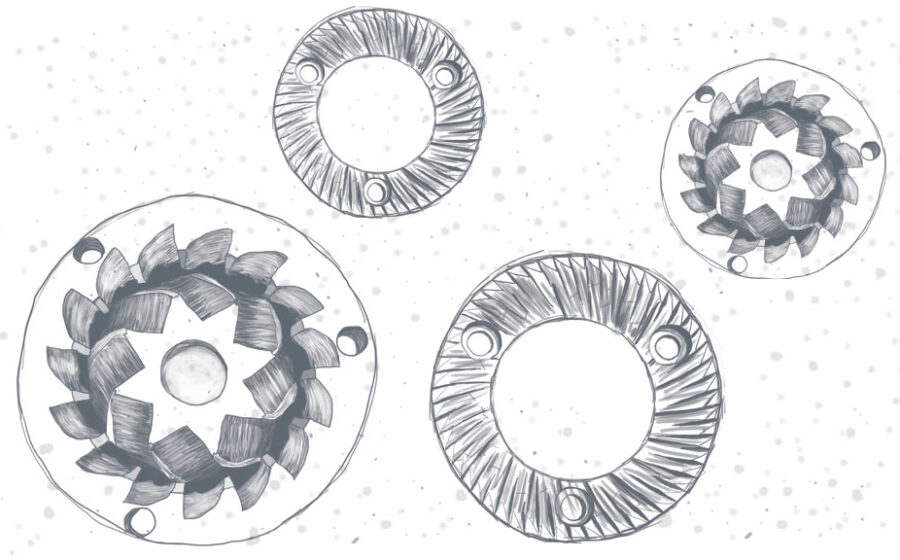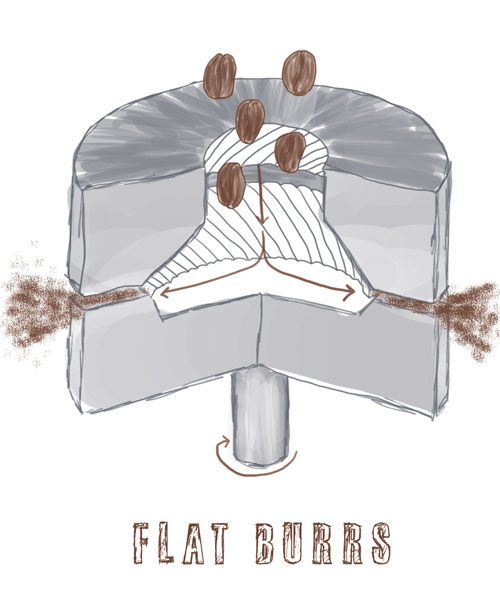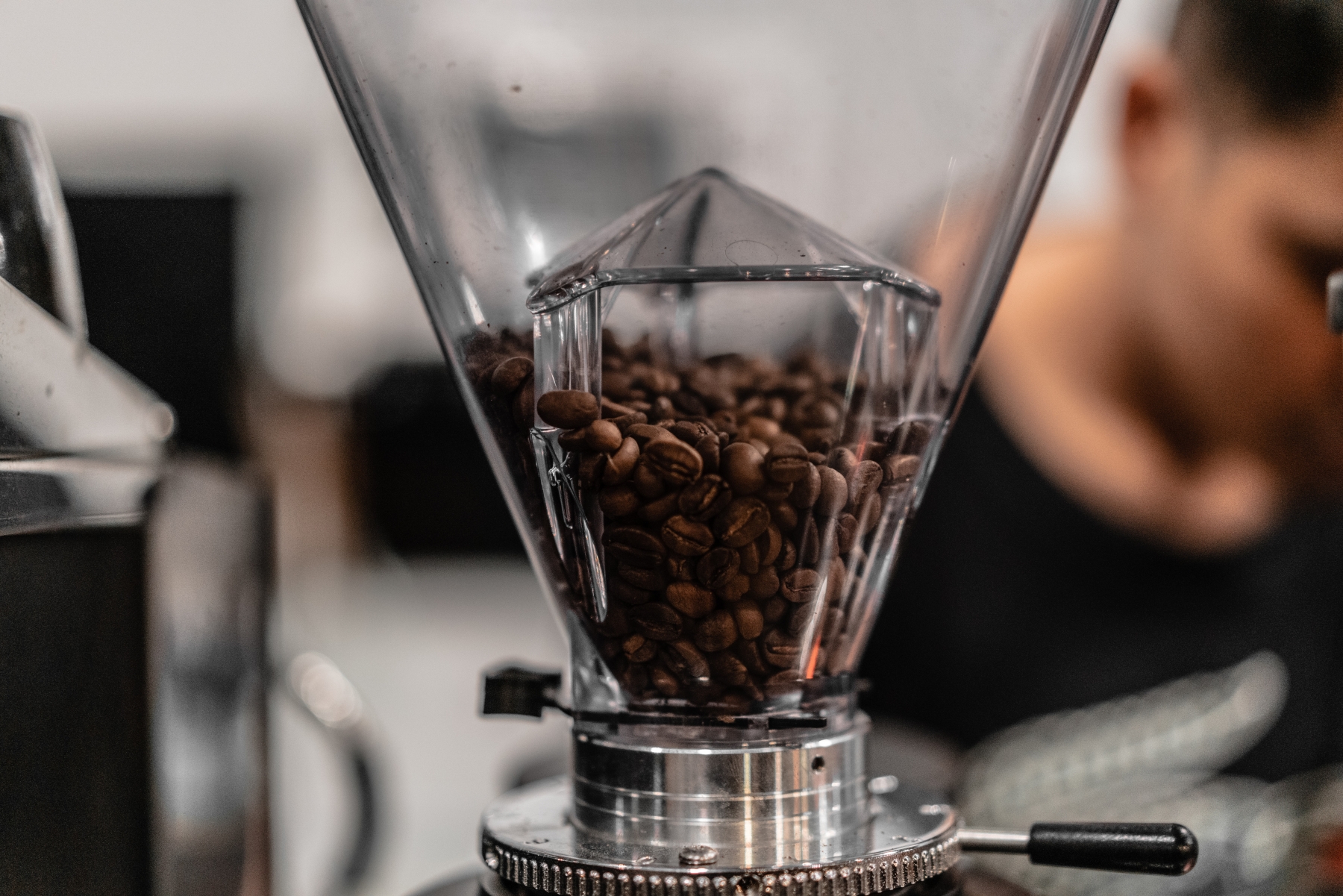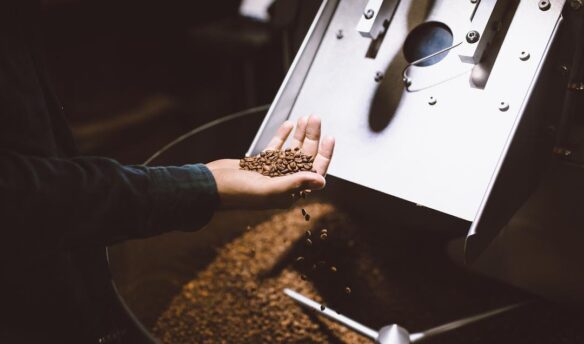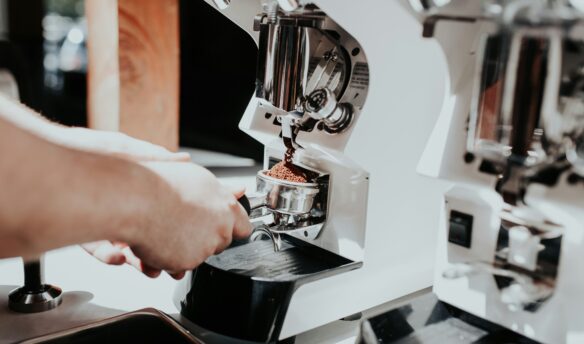What’s the most important piece of coffee equipment you own? If your answer was anything other than “My grinder,” you should probably reconsider. The quality and consistency of the ground beans is the foundation of any great cup of coffee. For that, you need a good grinder.
“The grinder sets the stage for what you’re about to brew,” says Steve Rhinehart, brand lead at online retailer Prima Coffee. “If you have an inconsistent grind, it will throw off your extraction.
Kyra Kennedy, the cofounder of grinder manufacturer Baratza, agrees. “Nobody buys a grinder because they want a grinder. What they want is a better-tasting cup,” she says. “The grinder is fundamental to getting that great-tasting cup.”
It’s well known that burr grinders are better than blade grinders, but from there, it’s complicated. Not all burrs are created equal, and the size, shape, and material of the burr can make significant impacts on the quality of the grind. “Every burr has its own particle size distribution,” says Kennedy. That, in turn, affects your control during brewing.
When choosing the best grinders for your café or restaurant, you should consider several factors, especially this one: what brew method are you grinding for?
Get It Fine: Espresso Grinders
Espresso requires a fine grind, which means your espresso grinder works much harder than your filter grinder to process the same amount of coffee. When you consider that most specialty coffee shops go through more espresso than filter coffee, it’s clear who your workhorse is. You need an espresso grinder that can take some wear and tear.
Espresso grinders can be divided into two camps: conical burr grinders and flat burr grinders, and both camps have their advocates and detractors.
Conical Burrs
Conical burr grinders, like the ubiquitous Mazzer Robur S and Compak K10, have been the industry standard for years. As the name implies, conical burrs are cone-shaped, with two complementary pieces. This allows more efficient, faster grinding than with flat burrs.
Conical burr grinders produce what is called a bimodal particle size distribution. If you looked at the coffee grounds under a microscope and grouped like-sized particles, you would have two groups: one composed of smaller particles; one larger. The smaller particles restrict the water flow through the coffee bed, giving the larger particles more time to saturate. A conventional espresso recipe is dependent on this slower flow rate.
A bimodal grind from conical burrs tends to produce a more potent shot of espresso with more body, something their advocates appreciate. Proponents of flat burr grinders point to the uneven extraction that comes from having two different groups of particle sizes. Different particle sizes will saturate at different rates, leading to differences in extraction percentages between the various particles.
Flat Burrs
Recent years have seen a decided shift toward flat burr grinders. True to their name, flat burrs feature two matching burrs that set flush against each other. Flat burrs create a more uniform particle size distribution, allowing the barista to extract more coffee without worrying about bitter, dry flavors from finer particles.
The lack of flow restriction with flat burr grinders, because there are fewer fine grinds, however, forces the baristas to grind finer (which has its limits) or pull longer shots. The move to much larger shots was made possible by these grinders—if you want to eschew conventional brewing recipes for your espresso, you’ll likely prefer a flat burr grinder.
The popularization of flat burr grinders can be attributed to the 2013 World Barista Championships. Matt Perger used a Mahlkönig EK 43, designed initially as a spice grinder. The EK 43 features gigantic ninety-eight-millimeter steel burrs (Mazzer’s flat-burr machines have eighty-three-millimeter burrs, for comparison), and those giant burrs help the EK 43 create its unrivaled tight particle size distribution.
However, espresso preparation with the EK 43 is cumbersome. That has opened the door for a new generation of grinders to mimic the EK 43’s larger burrs in a machine built for espresso preparation. One of the first companies to respond to this new demand was Nuova Simonelli with their Mythos series. A few years ago, Mahlkönig released the Peak, named for the visualization of a unimodal grind distribution, accomplished here with an eighty-millimeter steel burr.
Small Grind Problems
Whether or not you choose conical or flat burrs, practically all espresso grinders have two obstacles to overcome: temperature fluctuations and grind retention.
Friction generates heat, and grinding for espresso creates a lot of friction as the bean is broken down to a finer and finer size. As any barista in the middle of a rush can tell you, the fluctuating temperature of a busy espresso grinder can wreak havoc on espresso parameters. Shot times will speed up as the temperature increases in the machine during the morning rush, only to slow to a crawl once the line dies down and the machine cools.
Previously, a popular explanation was that the temperature fluctuation was causing the burrs to expand and contract. This theory has been soundly rejected. Even the hottest grinders don’t reach the necessary temperature to cause steel or titanium to expand. More recently, theorists have proposed that the coffee’s changing temperature produces the difference.
Cooler coffee is more brittle, causing more fines to be produced during grinding. Conversely, coffee beans are more malleable at higher temperatures, reducing the production of fines. Fewer fines result in a faster flow rate, thus explaining the change in shot times.
Most higher-end espresso grinders use a fan to compensate for temperature issues. As temperatures rise, the fan will turn on to cool the grinding chamber. In the case of the Mahlkönig Peak, the barista has the option to turn the fan on constantly. Nuova Simonelli made an unprecedented move by adding a heater to their Mythos Clima Pro One.
“It actively heats the grinding chamber to between thirty and forty degrees Celsius,” explains Rhinehart. “It will then heat or cool it throughout the day to keep it in that range. Because it holds the temperature stable, you don’t see as much variation throughout the day.” Whether you opt for a fan or a heater, make sure your house espresso grinder has some sort of temperature regulation.
An even bigger headache for baristas trying to dial in espresso is the grinders often retain a fair amount of coffee. Some ground espresso will always stay in the chute and between the burrs, which means whenever you grind, at least some of the coffee that comes out of the grinder was ground previously.
“I think grinder technology has a long, long way to go in improving the core ability to grind coffee,” says Mark Prince, senior editor of coffeegeek.com. “My main concern is stale coffee. Far too many grinders leave up to ten grams of ground coffee inside their chutes, channels, and burr sweep areas between grinding sessions. The freshness of the grind is 100 percent more important, in my opinion, than the slight differences between what a quality flat burr grinder can produce compared to a conical burr grinder.”
Beyond freshness issues, grind retention is also a problem when adjusting settings. Even if you purge two to three doses, you can not be entirely sure all of the previously retained coffee has been expunged. As a result, future shots might be a mixture of multiple particle sizes, leading to uneven extraction and increasing the chances of channeling.
Let It Drip: Filter Grinders
Although espresso grinders present the greatest challenges, equal thought should be put into choosing and maintaining your filter grinder. Filter grinders grind larger, coarser batches, which requires components built to withstand higher volumes while still providing a precise particle size distribution.
“Volume is a big thing,” says Rhinehart. “If you’re brewing a two-gallon Fetco, and you’re brewing a fresh one every hour or more, you need a grinder that can keep up with that volume.” Rhinehart suggests checking the manufacturer’s recommended usage and then erring on the side of caution. “You don’t want to be stuck with a grinder that’s going to break down faster because you’re putting undue stress on it,” he says.
For bulk filter grinders, three companies dominate the market: Mahlkönig, Ditting, and Bunn. Because an ideal grind for filter coffee includes minimal fines, all three companies use flat burrs in their grinders. “You can’t go wrong with any of them,” says Rhinehart, who does admit to a preference for Mahlkönig products.
For cafés that serve both batch brew and by-the-cup offerings, Rhinehart recommends having a designated coffee grinder for batch brew and one for pour-overs. “It’s a wise investment path,” he says. “If you must take your grinder down to replace the burrs, you still have another grinder.”
One grinder custom-tailored for manual brew methods is the Baratza Forté. This flat-burr grinder features innovative grind-by-weight technology that allows the barista to program the grinder to grind a precise amount of coffee. “It reduces the amount of labor time,” explains Kennedy. “And it reduces one thing they have to think about.” Kennedy also sees another use for grind-by-weight grinders. “It’s a great coffee grinder to be used in restaurants and offices, and it gives the coffee shop control over how their coffee is being brewed,” she says.
Take Good Care
After you select the right grinders for your café, proper care and maintenance are essential for proper function and product longevity.
Grinders should be vacuumed out at the end of each day, and the hoppers should be wiped clean. Periodically, espresso grinders should be disassembled and deep cleaned, as fines and oils will accumulate over time. Be sure to read the manual and contact the manufacturer before disassembling.
Café managers should also record how many pounds of coffee pass through a grinder each year. Different burrs have different life spans, but most busy cafés should plan on changing the burrs of their main grinders annually.
This article was originally published on March 7, 2016 and has been updated to meet Fresh Cup’s current editorial standards.


